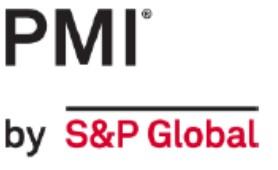The Global Purchasing Managers’ Index (PMI) for manufacturing produced by J P Morgan using the data from S&P Global slipped slightly further below the crucial 50 level in March, although output increased for the 2nd month in a row as incoming orders stabilised. Ironically, it was a further easing of the supply chain situation that worsened the index – suppliers’ delivery times improved but the index calculation sees this as indicating lower activity and has an inverse effect on the calculation.
There was a similar pattern in the UK data which led to a sharp reduction in the PMI, although at 47.9, it is still above the January figure. Unlike the global picture, output in the UK fell slightly – it had seen a small rise in February – but the survey notes that output in the investment goods industries (the most relevant for us) increase for the 2nd month running. Although export orders fell, there was a slight increase in total order books and average supplier lead times improved to the greatest extent in the survey’s history and it is this which drove the PMI reading lower.
The Euro-zone PMI fell to its lowest level for 4 months and was below 50 for the month consecutive month. Output actually increased slightly but a further contraction of order books and the improvement of suppliers’ delivery times we have already noted contributed to the lower overall reading. Among the 8 countries covered by this region, only Greece and Spain saw their PMI improve compared to February; Italy’s reading slipped but with the other two countries, these are the only ones where the manufacturing PMI is above 50. There was a sharp fall in the reading for Austria and the Netherlands and to a slightly lesser extent in Germany; Austria and Germany had their lowest readings for 34 months (May 2020).
Among the other EU countries who have a PMI survey, there was a significant fall for Sweden and Hungary (although the latter remains well above 50), while the Polish and Czech indices were broadly unchanged at negative levels (as is Sweden’s). Outside the EU, there was a small improvement for Turkey which consolidated its positive position but a further decline for Switzerland which fell further below 50 having only cross that border in January this year.
In the Americas, we see a mixed picture; the USA and Columbia had a significant improvement – for the former the reading remains negative but the latter saw a move back to expansion. In contrast, there was a sharp fall in the PMI for Brazil and Canada with the former slipping further into negative territory and the latter returning to that position after a couple of months of growth. Mexico’s manufacturing PMI was unchanged at a modestly positive level.
In Asia, India continues to have a strong expansion of activity in its manufacturing sector with a further rise in the index being reported; Japan also had an increase compared to the February reading but in this case it was not enough to move them out of negative territory. Both China and the ASEAN group saw their PMI reading fall with the latter remaining above 50 and China exactly on that mark. Finally, both South Korea and Taiwan slipped further into negative territory in March.
Across the 27 countries/regions that we cover in this analysis (excluding the global total), 10 have manufacturing PMI’s above 50 (plus one more exactly on this mark) compared to February which had 13 readings above 50. The highest PMI this month was in India while the lowest continues to be the Czech Republic; compared to February, the biggest improvement in the manufacturing PMI was in the USA while the largest fall was in Canada.
The individual S&P Global PMI reports are available to download on their web-site at https://www.pmi.spglobal.com/Public/Release/PressReleases but we also have a summary charts report which is available to download below. You should note that the PMI readings for Hungary, Sweden and Switzerland are not compiled by S&P Global but can be found with an appropriate internet search (it also means that they are not part of the global PMI calculation).
| Attachment | Size |
|---|---|
| PMI Report – March 2023.pdf | 99.77 KB |

